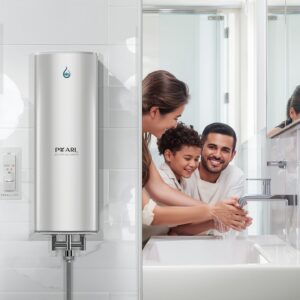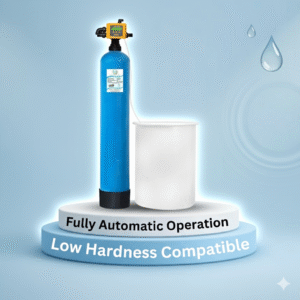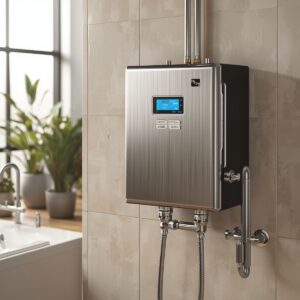Understanding TDS Meter – A Complete Guide
Clean drinking water isn’t a luxury anymore; it’s a necessity. And with increasing concerns about water pollution, more households are becoming aware of the importance of checking water quality. One of the simplest tools to do this is a TDS Meter. In this blog, we’ll dive deep into what a TDS meter is, how it works, why it’s essential, and how to pick the right one for your needs.
Introduction to TDS Meter
What is a TDS Meter?
A TDS meter, short for Total Dissolved Solids meter, is a small, handy device used to measure the concentration of dissolved substances in water. These substances include minerals, salts, and metals. Essentially, the TDS meter gives you an idea of the overall purity of your water. The lower the TDS, the purer the water is considered.
Why TDS Measurement Matters for Water Quality
If you’re drinking water that tastes odd or leaves residue in your kettle, chances are the TDS level is high. Measuring TDS helps identify if your water is suitable for drinking, cooking, or even for use in appliances like washing machines and aquariums. In short, a TDS meter acts as an early warning system for water quality issues.
How a TDS Meter Works
The Science Behind TDS Measurement
TDS meters work on the principle of electrical conductivity. Dissolved solids in water conduct electricity. The meter measures this conductivity and converts it into a TDS reading, usually expressed in parts per million (ppm).
Digital vs Analog TDS Meters
Today, digital TDS meters dominate the market because they’re more accurate, easier to read, and portable. Analog meters are rarely used but may still be found in industrial settings.
Key Benefits of Using a TDS Meter
Ensuring Safe Drinking Water
Knowing your water’s TDS level ensures you’re consuming safe water. While minerals like calcium and magnesium are good in small amounts, excessive levels can cause health issues and unpleasant taste.
Protecting Household Appliances
High TDS water can damage appliances like water purifiers, coffee makers, and washing machines by forming scale deposits. By keeping track of TDS, you can prevent costly repairs.
Improving Health Awareness
A TDS meter empowers you to make informed choices about your water source. It helps you decide whether to install a water purifier or switch to bottled water.
Types of TDS Meters
Handheld Meters
These are the most common types, perfect for domestic use. They’re affordable, easy to carry, and ideal for quick tests.
Inline Meters
These are installed directly in water pipelines and provide continuous monitoring of TDS levels. They’re often used in industrial settings or with large-scale filtration systems.
Pen-Style Meters
As the name suggests, these are compact, pen-like devices suitable for everyday household use. They’re lightweight and easy to store.
How to Use a TDS Meter Effectively
Step-by-Step Guide
Collect a sample of water in a clean glass.
Turn on the TDS meter and dip the probe into the water.
Wait for the reading to stabilize, usually a few seconds.
Note down the TDS value displayed on the screen.
Common Mistakes to Avoid
Not rinsing the meter before use can cause inaccurate readings.
Using dirty containers can skew results.
Ignoring calibration may result in faulty readings over time.
Ideal TDS Levels for Drinking Water
WHO Guidelines
According to the World Health Organization (WHO), water with a TDS level below 300 ppm is considered excellent for drinking. Levels above 500 ppm may not be suitable for consumption.
Interpreting the Readings
0–50 ppm: Distilled or highly purified water.
50–150 ppm: Good quality water with essential minerals.
150–300 ppm: Acceptable for drinking.
300–500 ppm: Poor quality, may need filtration.
Above 500 ppm: Not recommended for consumption.
Buying Guide – Choosing the Right TDS Meter
Features to Look For
Accuracy: Ensure the meter provides precise readings.
Ease of Use: Look for clear displays and simple buttons.
Durability: Choose one with a robust build for long-term use.
Additional Features: Some advanced models measure temperature as well.
Price vs Quality
While cheap meters may seem attractive, investing in a reliable brand ensures accuracy and longevity. Most good-quality TDS meters are still quite affordable for households.
TDS Meter Maintenance Tips
Calibration
Like any measurement tool, a TDS meter needs calibration to maintain accuracy. Many digital meters come pre-calibrated, but periodic recalibration is recommended.
Cleaning and Storage
After each use, rinse the probe with distilled water and dry it gently. Store the meter in its protective case to prolong its life.
Conclusion – Why Every Home Needs a TDS Meter
In today’s world, where water contamination is a growing concern, owning a TDS meter is no longer optional. It’s an essential tool for ensuring your family’s health and protecting your appliances. Affordable, easy to use, and reliable—there’s really no reason not to have one.
FAQs
1. What is a good TDS reading for drinking water?
A TDS level between 50–150 ppm is considered good for drinking water.
2. Can a TDS meter detect bacteria in water?
No. A TDS meter measures dissolved solids, not biological contaminants like bacteria.
3. How often should I test my water’s TDS?
Testing once a month is usually sufficient for household water supplies.
4. Do all water purifiers reduce TDS?
Not all. RO (Reverse Osmosis) purifiers are specifically designed to lower TDS levels.
5. Can I use the same TDS meter for different water sources?
Yes, but ensure you rinse the probe between tests to avoid cross-contamination.


